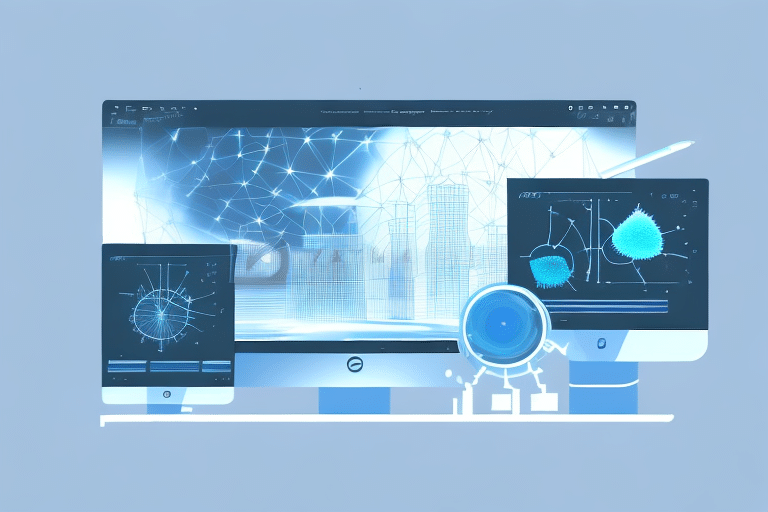Introduction
In today’s rapidly evolving digital landscape, educational institutions are constantly seeking innovative ways to enhance the learning experience for students. One such transformative change gaining momentum is the transition from traditional physical computer labs to virtual counterparts. This shift not only aligns with the technological advancements of our time but also offers numerous benefits that can significantly improve campus life and educational outcomes. In this article, we will explore the top 10 compelling reasons why colleges and universities should consider making the switch.
1. Cost Efficiency and Sustainability
Physical computer labs require substantial investments in hardware, maintenance, and infrastructure. By adopting virtual labs, institutions can reduce overhead costs, energy consumption, and e-waste, contributing to a more sustainable campus environment.
2. 24/7 Accessibility/Security
Virtual computer labs provide students with unrestricted access to resources, software, and applications round the clock. This accessibility empowers students to work on assignments, projects, and research whenever it best suits their schedules, fostering a culture of flexibility and autonomy.
Because students don’t need to visit campus during off hours, they will be safer and complete assignments from any location.
3. Enhanced Learning Experience
Virtual labs offer a personalized and interactive learning environment. Students can experiment with various software configurations, collaborate seamlessly on projects, and gain practical skills that mirror real-world scenarios.
Student Collaboration with Apporto
4. Remote Learning and Flexibility
The rise of remote and hybrid learning models demands a robust online infrastructure. Virtual computer labs facilitate distance education by allowing students to access software from anywhere, promoting inclusivity and accommodating diverse learning needs.
Top Market Trend: Digital Equity
5. Resource Optimization
Virtual labs eliminate the need for redundant software installations on multiple machines. This optimizes resource allocation, ensuring that software licenses are utilized efficiently and reducing software procurement costs.
6. Scalability
As student populations grow, virtual labs offer the advantage of easy scalability. Institutions can quickly accommodate more users without the hassle of physically expanding lab spaces or procuring additional hardware.
7. Security and Data Protection
Virtual labs provide enhanced security measures, including centralized data storage, regular backups, and controlled access. This safeguards sensitive student information and intellectual property while minimizing the risk of data breaches.
8. Use Case: STEM Programs and Simulations
In science, technology, engineering, and mathematics (STEM) fields, virtual labs offer realistic simulations and experiments. Students can manipulate variables, observe outcomes, and hone their analytical skills in a controlled digital environment.
9. Use Case: Fine Arts and Graphic Design
Art students can access specialized software for graphic design, animation, and multimedia projects. Virtual labs enable them to explore their creativity without limitations, fostering innovation and artistic expression.
10. Future-Readiness and Technological Literacy
Transitioning to virtual labs equips students with digital competencies vital for their careers. They become familiar with cloud-based tools, virtualization technologies, and remote collaboration tools, enhancing their readiness for a tech-driven job market.
Virtual Computer Lab ROI Calculator

Challenges of Maintaining Physical, On-Campus Computer Labs
While the benefits of transitioning to virtual computer labs are compelling, it’s essential to acknowledge the challenges that institutions often face when maintaining traditional physical labs on campus. These challenges highlight the limitations of the status quo and underscore the need for a forward-looking approach to educational technology.
1. Space Limitations and Infrastructure Costs
Physical computer labs require dedicated space, often resulting in space constraints on campus. Building and maintaining these labs demand substantial financial investments for construction, hardware procurement, networking infrastructure, and ongoing maintenance.
2. Hardware and Software Management
Managing a fleet of physical computers necessitates regular updates, troubleshooting, and software installations. Coordinating these tasks across multiple machines can be time-consuming and resource-intensive.
3. Restricted Access and Scheduling Conflicts
Physical labs typically operate during specific hours, leading to scheduling conflicts and limited access for students. This can hinder productivity, especially during peak usage times, and restrict students’ ability to work at their own pace.
4. Technical Challenges and Downtime
Physical labs are susceptible to technical issues, hardware failures, and unexpected downtime. Such disruptions can negatively impact students’ workflow, disrupt classes, and create frustration among both students and faculty.
5. Inflexibility in Remote Learning
Traditional labs may not seamlessly support remote learning initiatives, limiting institutions’ ability to provide an optimal educational experience for off-campus or online students.
6. Resource Allocation and Utilization
Physical labs often struggle with uneven resource utilization. Some machines may be underutilized, while others experience heavy traffic, leading to inefficiencies and wasted resources.
7. Security and Data Privacy Concerns
Physical labs may present security challenges, such as data breaches, unauthorized access, or theft of hardware. Ensuring robust security measures across multiple locations can be complex and demanding.
8. Limited Adaptability to Changing Needs
The fixed nature of physical labs can make it challenging to adapt to evolving technological and educational requirements. Expanding or upgrading physical labs to accommodate changing needs can be a slow and expensive process.
9. Maintenance and Upkeep Costs
Ongoing maintenance costs, including hardware repairs, software updates, and infrastructure upgrades, can strain institutional budgets over time.
10. Environmental Impact
Physical labs contribute to energy consumption, e-waste, and carbon footprint. Transitioning to more environmentally friendly solutions aligns with sustainability goals and reduces the institution’s ecological impact.
In light of these challenges, the transition to virtual computer labs presents a compelling opportunity for colleges and universities to overcome these limitations and create a more efficient, flexible, and future-ready learning environment. By addressing these challenges head-on, institutions can pave the way for a transformative shift that enhances the educational experience for students and positions the campus for success in the digital age.
Conclusion
The shift from physical to virtual computer labs is not just a trend; it’s a strategic move that positions educational institutions at the forefront of innovation. By embracing these modern learning environments, colleges and universities can provide students with unparalleled access, flexibility, and opportunities for skill development. This transition not only streamlines campus operations but also prepares students for success in an increasingly digital world. As institutions continue to prioritize educational excellence, the adoption of virtual computer labs emerges as a powerful catalyst for transformative change.


